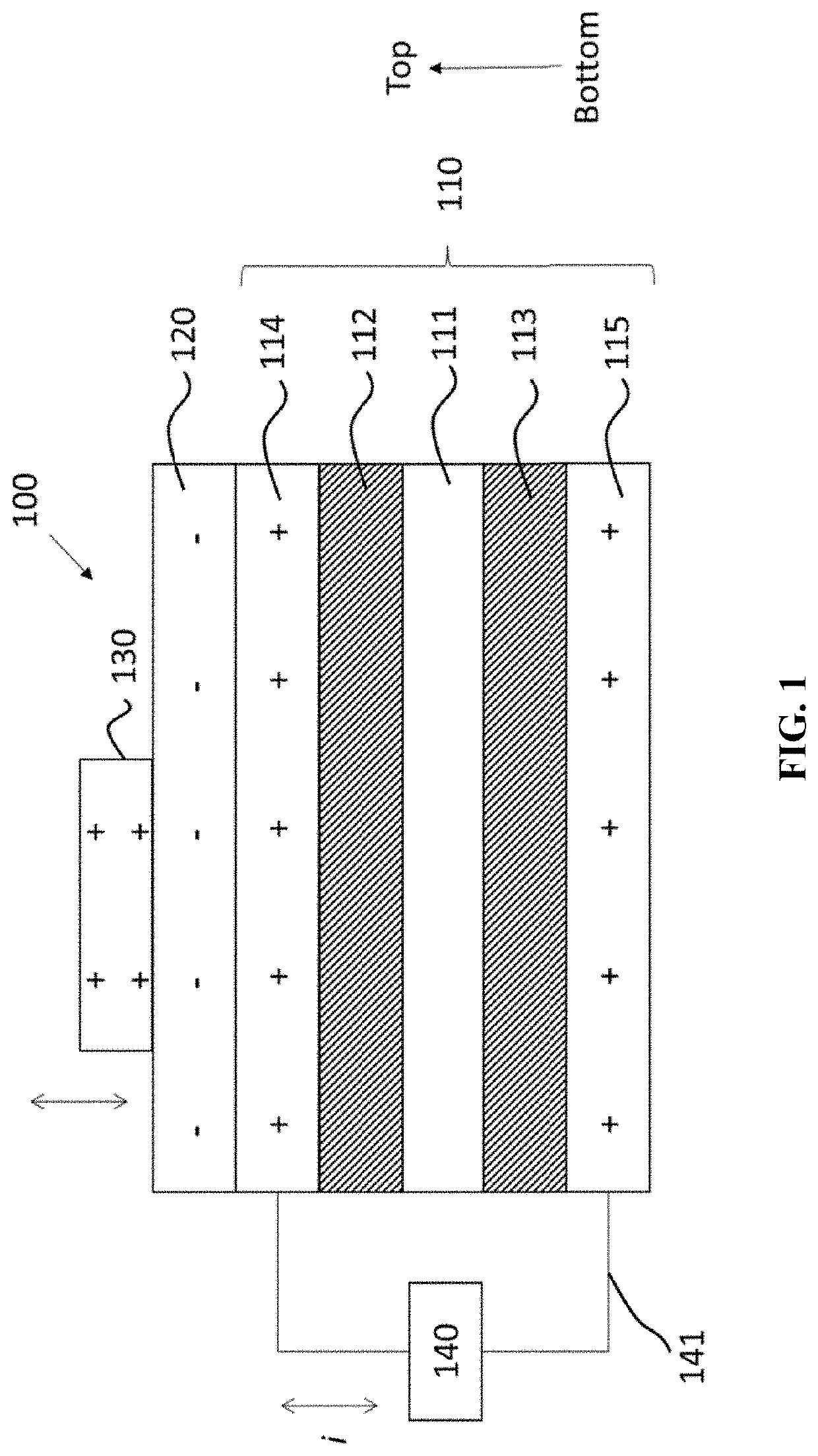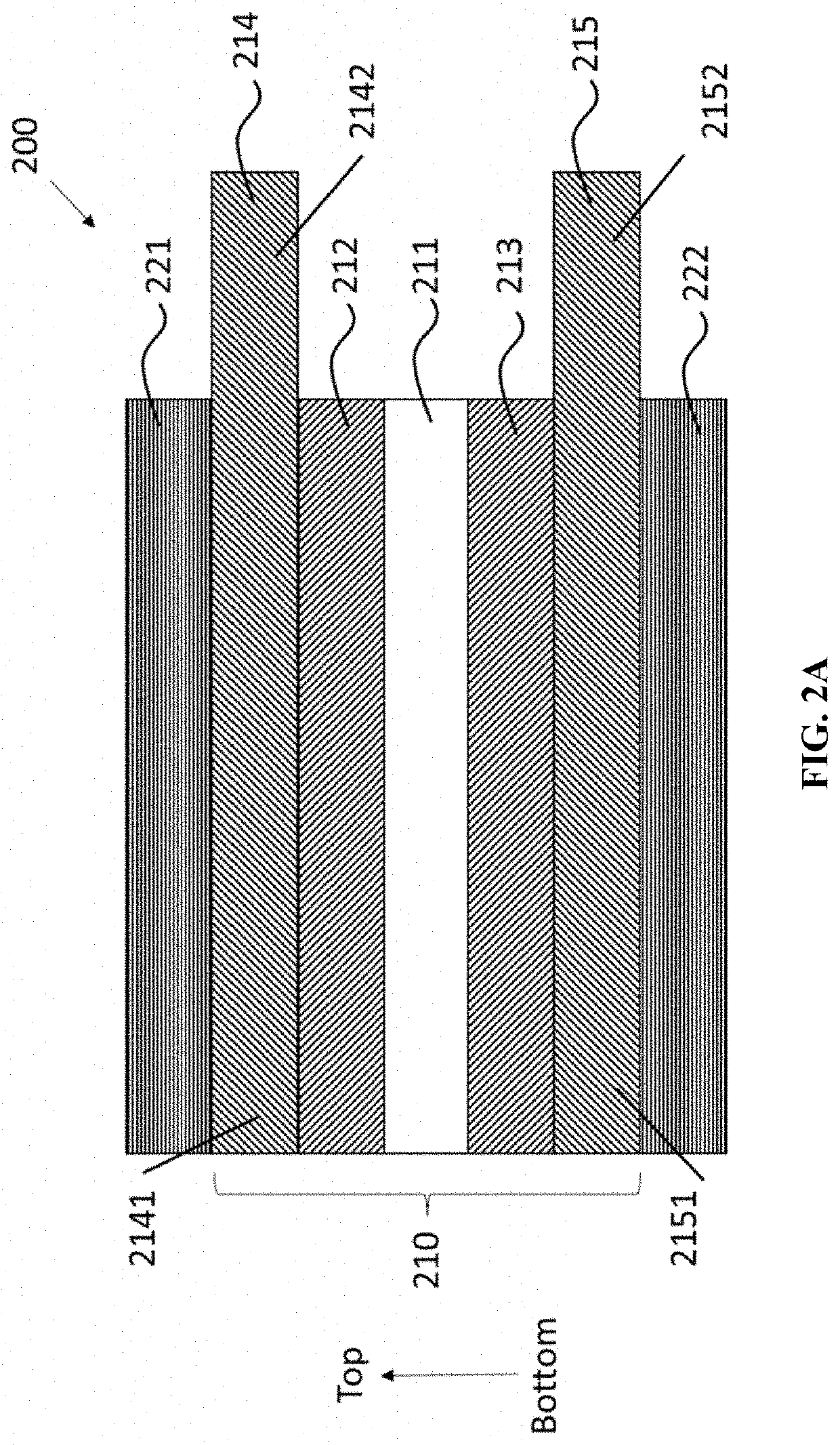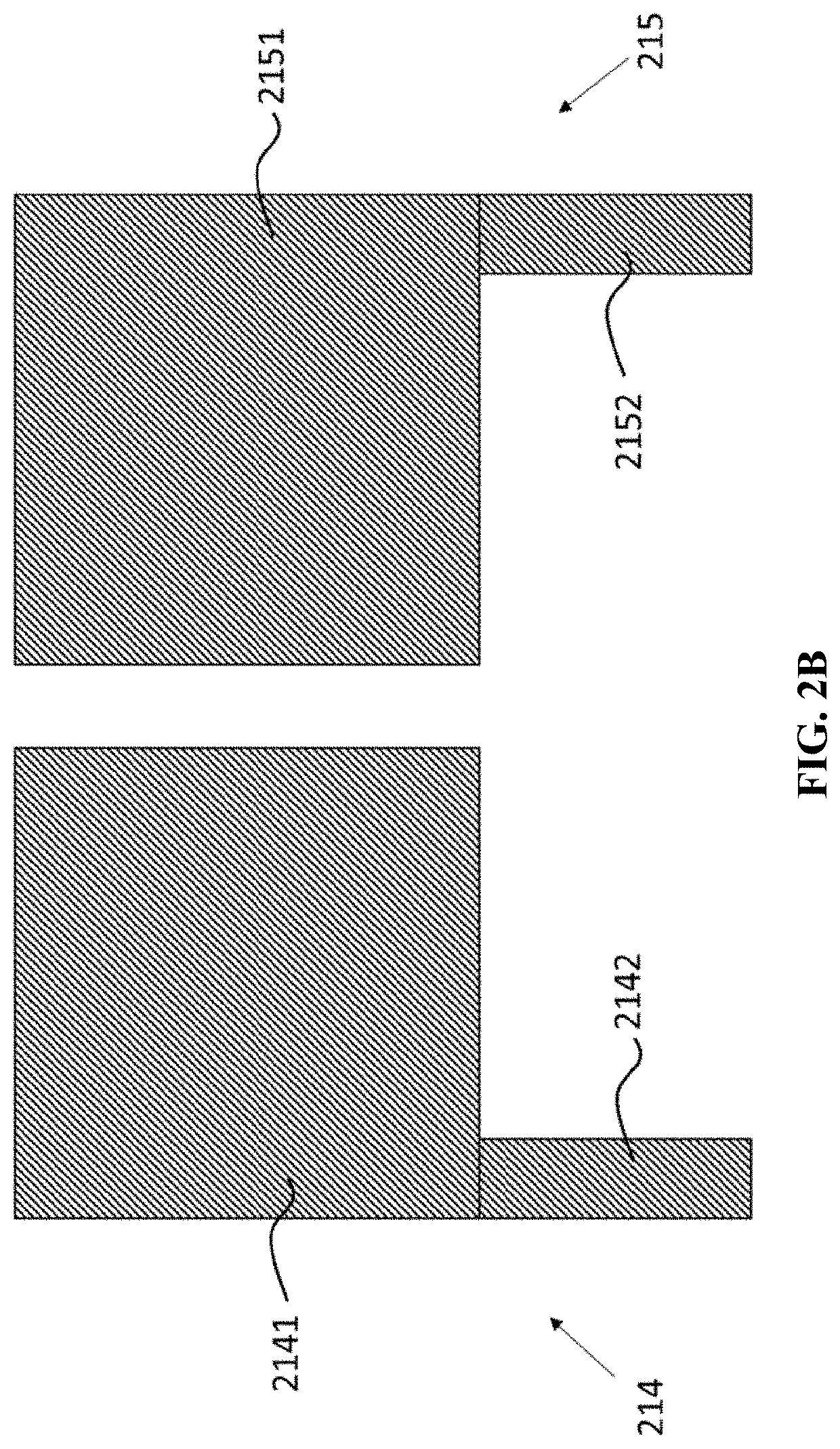Flexible electric generator for generating electric power
a generator and flexible technology, applied in the field of flexible electric generators, can solve the problems of high cost, difficult utilization of pvdf as energy harvesters, and complicated fabrication process
- Summary
- Abstract
- Description
- Claims
- Application Information
AI Technical Summary
Benefits of technology
Problems solved by technology
Method used
Image
Examples
example 1
[0099]A flexible electric generator is prepared as follows. The flexible electric generator includes a flexible piezoelectric generator and two triboelectric layers. The flexible piezoelectric generator includes a piezoelectric composite layer, two dielectric layers, and two electrode layers. The materials of the piezoelectric composite layer includes PDMS with hardness of Shore A 20 degree (the weight ratio of PDMS component A (i.e., a base elastomer), to PDMS component B (i.e., a curing agent) is 1:1), 1150° C. calcined lead zirconate titanate powder with particle size ranging from 100 nm to 1 μm, and multi-walled carbon nanotubes. The weight ratio of lead zirconate titanate to the total composite is 50%. The weight ratio of multi-walled carbon nanotubes to the total composite is 0.5%. The thickness of the piezoelectric composite layer is 100 μm. The side length of piezoelectric composite layer is 5 cm.
[0100]The material of the two dielectric layers is PDMS with hardness of Shore ...
example 2
[0102]The flexible electric generator of Example 2 is substantially similar to that of Example 1 except that this flexible electric generator further includes a partial flexible electrode. When the surface contact object is human bare skin, a partial flexible electrode can be added to improve the power generation performance. Similar to FIGS. 3A and 3B, the partial flexible electrode is located onto the top surface of the triboelectric layer and forms ohmic contact with the electrode layer using back-sided electrical conductive acrylic glue thin film. The purpose of the partial flexible electrode is efficiently collecting and exporting the power generated through triboelectric effect due to the fast surface contact and separation between human bare skin and the top surface of the triboelectric layer.
[0103]In this example, the material of the partial flexible electrode is a conductive fabric fabricated by polyester fiber deposited with nickel and copper. The generated instantaneous m...
example 3
[0104]The flexible electric generator of Example 3 is substantially similar to that of Example 1 except that one of the two triboelectric layers is replaced by a porous flexible triboelectric layer. To form the porous flexible triboelectric layer, a foaming agent, phenyltriethoxysilane with weight ratio of 2% is mixed into a silicone precursor. A porous structure is formed when curing the above at 100° C. for 20 min. The average diameter of the resulted bubbles is 100 μm. The thickness of the porous triboelectric layer is 150 μm. The side length of the porous triboelectric layer is 5 cm.
[0105]By using bare hand tapping onto the flexible electric generator, the generated instantaneous mean root square current density is 0.9 μA / cm2 and the generated instantaneous mean root square voltage density is 1.8 V / cm2. It demonstrates that the generated power is substantially increased by using the porous flexible triboelectric layer.
PUM
 Login to View More
Login to View More Abstract
Description
Claims
Application Information
 Login to View More
Login to View More - R&D
- Intellectual Property
- Life Sciences
- Materials
- Tech Scout
- Unparalleled Data Quality
- Higher Quality Content
- 60% Fewer Hallucinations
Browse by: Latest US Patents, China's latest patents, Technical Efficacy Thesaurus, Application Domain, Technology Topic, Popular Technical Reports.
© 2025 PatSnap. All rights reserved.Legal|Privacy policy|Modern Slavery Act Transparency Statement|Sitemap|About US| Contact US: help@patsnap.com



